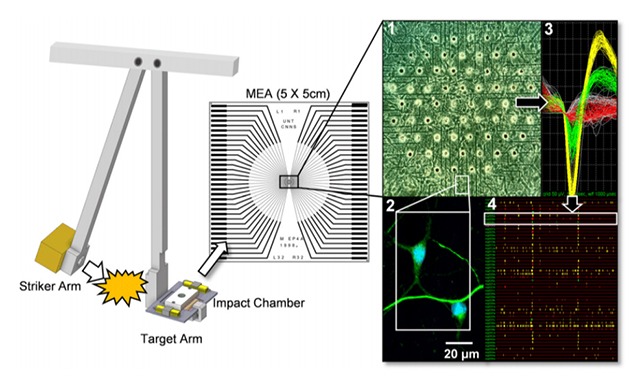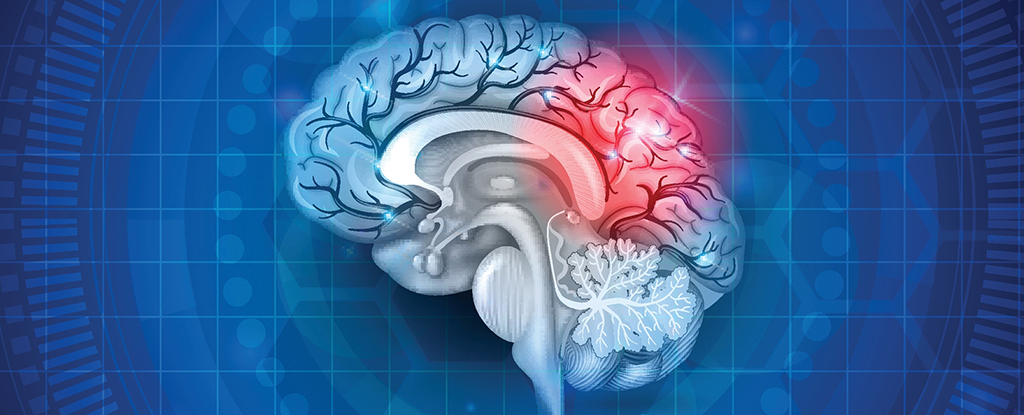Scientists already know that traumatic brain injury (TBI) increases the risk of developing Alzheimer's disease, but it's not clear why. A new study has shed some light on this, and on how factors behind Alzheimer's risk emerge almost immediately after a concussion.
A team led by Purdue University has developed what they're calling a 'mini-brain', which houses clusters of cultured mouse neurons alongside nutrients in a tiny chamber. This device can then be used to examine the effects of heavy impacts on brain cells.
"We're basically creating a miniature brain that we can hit and then study," says neuroscientist Riyi Shi, from Purdue University.
"With the TBI on a chip, we're able to test a lot of hypotheses that would be very difficult to do in living animals."

The mini brain is struck with a pendulum, and the effects on the cells analyzed. (Rogers et al., Lab on a Chip, 2023)
After subjecting their mini-brain to three blows of 200 g-force – each similar to a hit on the head that might cause concussion in American football – the researchers noticed the cells produced a surge of acrolein, which has previously been linked to cell damage and neurodegenerative disease.
An increase in misfolded amyloid beta 42 proteins was also noticed after the hits, triggered by the acrolein increase. Clumps of these proteins are found in the brains of people with Alzheimer's disease; that's two key risk signals, both happening within the first 24 hours after the simulated blows to the head.
The good news is that this new knowledge could help with the treatment of the disease. Further tests by the researchers showed that the drug hydralazine, already used to treat high blood pressure and known to target acrolein, could reduce the levels of acrolein after a concussion hit.
"Acrolein is time-dependent – the longer it's there, the more AB42 aggregation it will cause," says Shi. "Here we show that if we lower acrolein with this drug, we can lower inflammation and AB42 aggregation."
While we're learning more about Alzheimer's all the time, it's still not fully clear how the disease gets started and spreads, which in turn makes it very difficult to develop a cure. Discoveries about key neural pathways that increase Alzheimer's risk, such as the one here, should help.
And with this mini-brain, scientists have something they can repeatedly hit using a pendulum mechanism and then carefully observe by studying the cells under a microscope and then removing them for further analysis.
"Thanks to this device, people should know that when you get a concussion, you don't have 10 years before you will see damage," says Shi. "The clock starts ticking immediately, and if we want to do something about it, we need to act quickly."
The research has been published in Lab on a Chip.



Recommended Comments
There are no comments to display.
Join the conversation
You can post now and register later. If you have an account, sign in now to post with your account.
Note: Your post will require moderator approval before it will be visible.